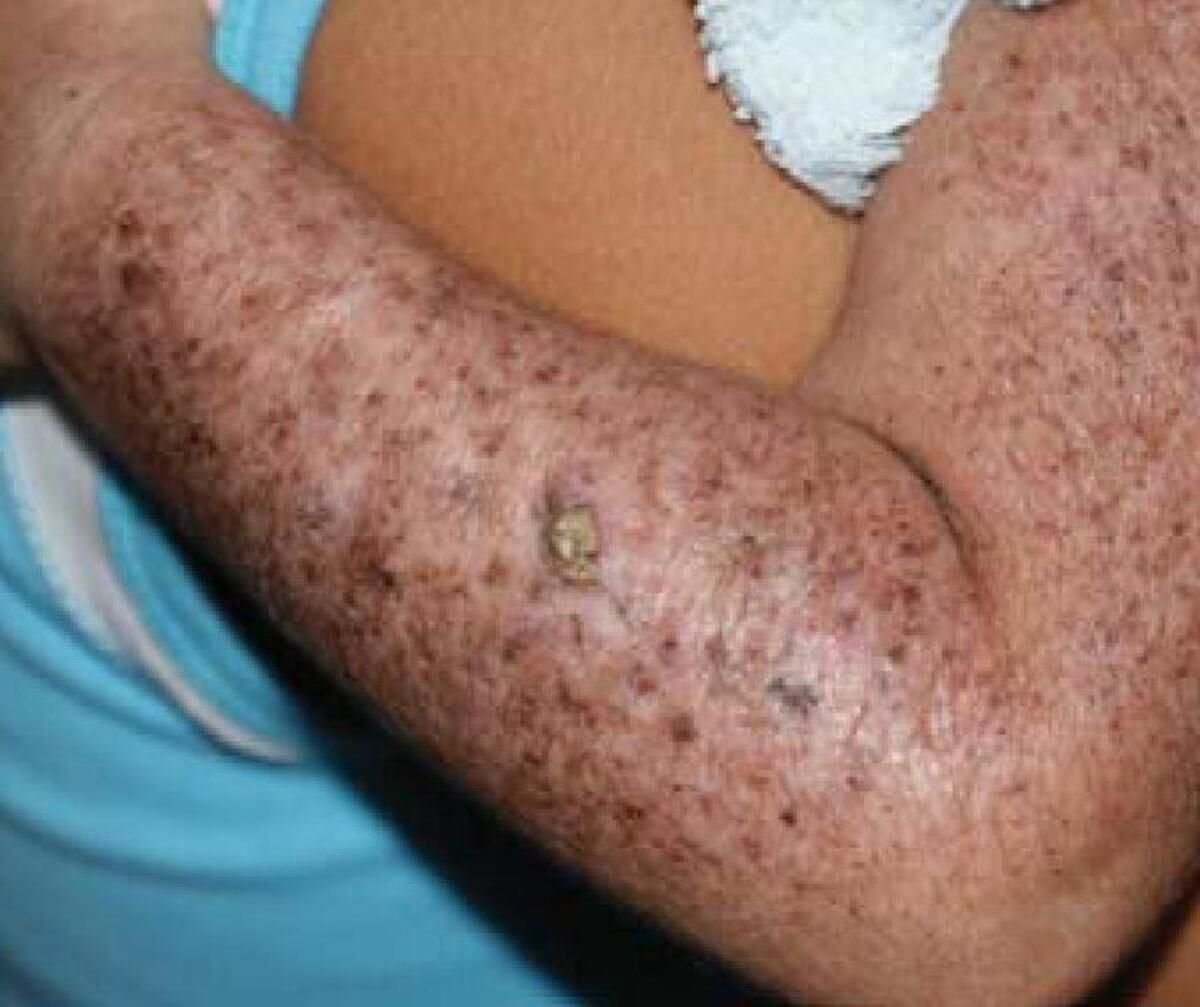
Desanctis–Cacchione Syndrome is a rare genetic disorder that combines features of xeroderma pigmentosum with neurological abnormalities. This condition affects the skin, eyes, and nervous system, making life challenging for those diagnosed. Symptoms often include extreme sensitivity to sunlight, leading to severe sunburns, skin cancers, and eye problems. Neurological issues can range from developmental delays to hearing loss. Understanding this syndrome is crucial for early diagnosis and management. Genetic mutations are the root cause, specifically affecting DNA repair mechanisms. Treatment focuses on managing symptoms and protecting the skin from UV exposure. Research continues to seek better therapies and potential cures.
What is Desanctis–Cacchione Syndrome?
Desanctis–Cacchione Syndrome is a rare genetic disorder. It combines features of xeroderma pigmentosum with neurological abnormalities. This condition affects the skin, eyes, and nervous system. Let's dive into some fascinating facts about this syndrome.
Genetic Basis
Understanding the genetic roots of Desanctis–Cacchione Syndrome helps in grasping its complexity.
- Desanctis–Cacchione Syndrome is inherited in an autosomal recessive manner. This means both parents must carry a copy of the mutated gene for their child to be affected.
- Mutations in the XPA, XPC, or ERCC2 genes are often responsible. These genes play a crucial role in DNA repair, which is impaired in this syndrome.
Symptoms and Manifestations
The symptoms of Desanctis–Cacchione Syndrome are diverse and can affect multiple body systems.
- Extreme sensitivity to sunlight is a hallmark symptom. Even minimal sun exposure can cause severe sunburns and skin damage.
- Patients often develop freckling and pigmentation changes at an early age. These skin changes can appear as early as infancy.
- Neurological symptoms include intellectual disability and developmental delays. These issues can range from mild to severe.
- Microcephaly, or a smaller-than-average head size, is common. This condition often correlates with intellectual challenges.
- Seizures are a frequent complication. They can be difficult to control and may require multiple medications.
- Hearing loss is another possible symptom. This can affect one or both ears and may worsen over time.
- Eye abnormalities, such as photophobia and cataracts, are prevalent. These issues can lead to significant vision impairment.
Diagnosis and Testing
Accurate diagnosis is crucial for managing Desanctis–Cacchione Syndrome effectively.
- Diagnosis often involves genetic testing. Identifying mutations in the relevant genes confirms the condition.
- Skin biopsies can reveal characteristic cellular changes. These changes help differentiate it from other skin disorders.
- Neurological assessments are essential. They help determine the extent of intellectual and developmental delays.
Treatment and Management
While there is no cure, various treatments can help manage symptoms and improve quality of life.
- Strict sun protection is vital. This includes using high-SPF sunscreen, wearing protective clothing, and avoiding sun exposure.
- Regular skin examinations are necessary. Early detection of skin cancers can significantly improve outcomes.
- Anticonvulsant medications help control seizures. Finding the right medication can be a trial-and-error process.
- Hearing aids or cochlear implants can address hearing loss. These devices improve communication and quality of life.
- Special education programs support intellectual development. Tailored educational plans help maximize learning potential.
Prognosis and Life Expectancy
Understanding the long-term outlook for individuals with Desanctis–Cacchione Syndrome is important for families and caregivers.
- Life expectancy varies widely. It depends on the severity of symptoms and the effectiveness of management strategies.
- Early detection and intervention improve outcomes. Proactive care can mitigate some of the syndrome's most severe complications.
- Ongoing research aims to find better treatments. Advances in genetic therapy hold promise for future breakthroughs.
Final Thoughts on Desanctis–Cacchione Syndrome
Desanctis–Cacchione Syndrome is a rare genetic disorder that combines symptoms of xeroderma pigmentosum with neurological issues. This condition affects the skin's ability to repair damage from UV light, leading to a high risk of skin cancer. Neurological symptoms can include intellectual disability, hearing loss, and poor coordination. Early diagnosis and vigilant protection from UV exposure are crucial for managing the condition. Genetic counseling can help families understand the risks and implications. While there's no cure, treatments focus on managing symptoms and preventing complications. Awareness and research are key to improving the lives of those affected. Understanding this syndrome helps in advocating for better care and support for patients and their families.
Was this page helpful?
Our commitment to delivering trustworthy and engaging content is at the heart of what we do. Each fact on our site is contributed by real users like you, bringing a wealth of diverse insights and information. To ensure the highest standards of accuracy and reliability, our dedicated editors meticulously review each submission. This process guarantees that the facts we share are not only fascinating but also credible. Trust in our commitment to quality and authenticity as you explore and learn with us.


